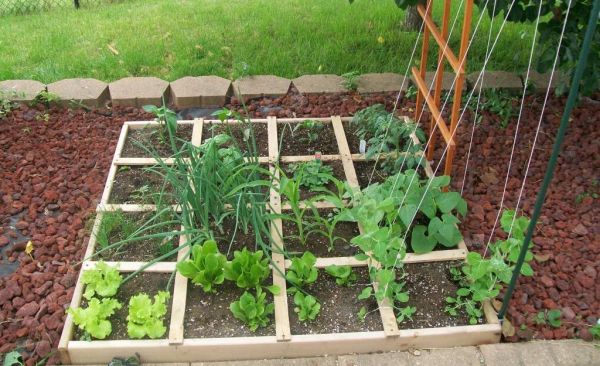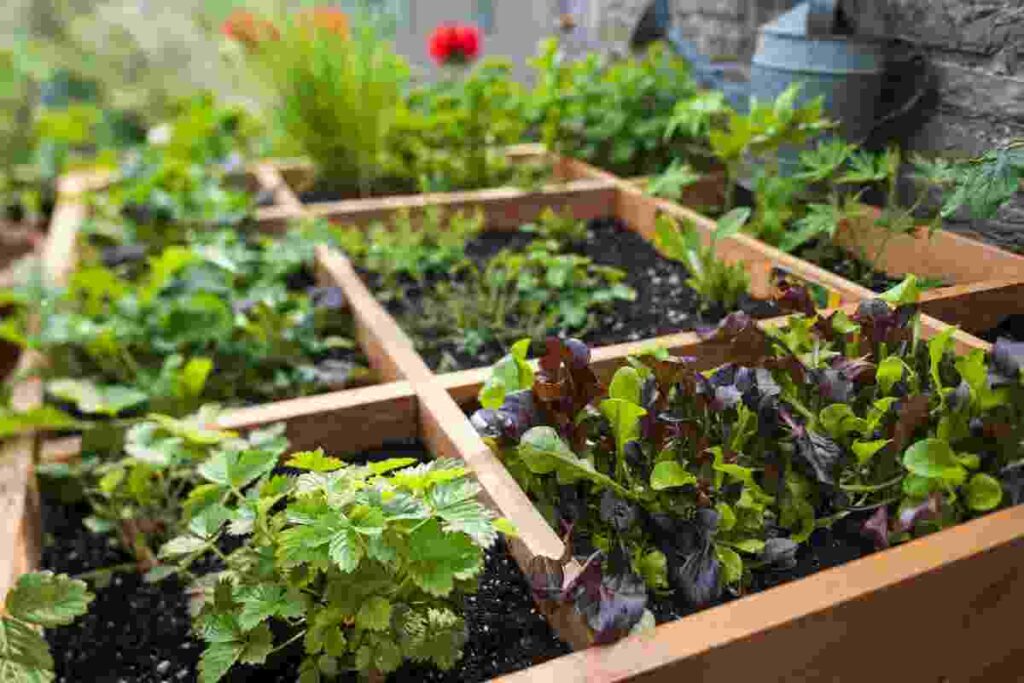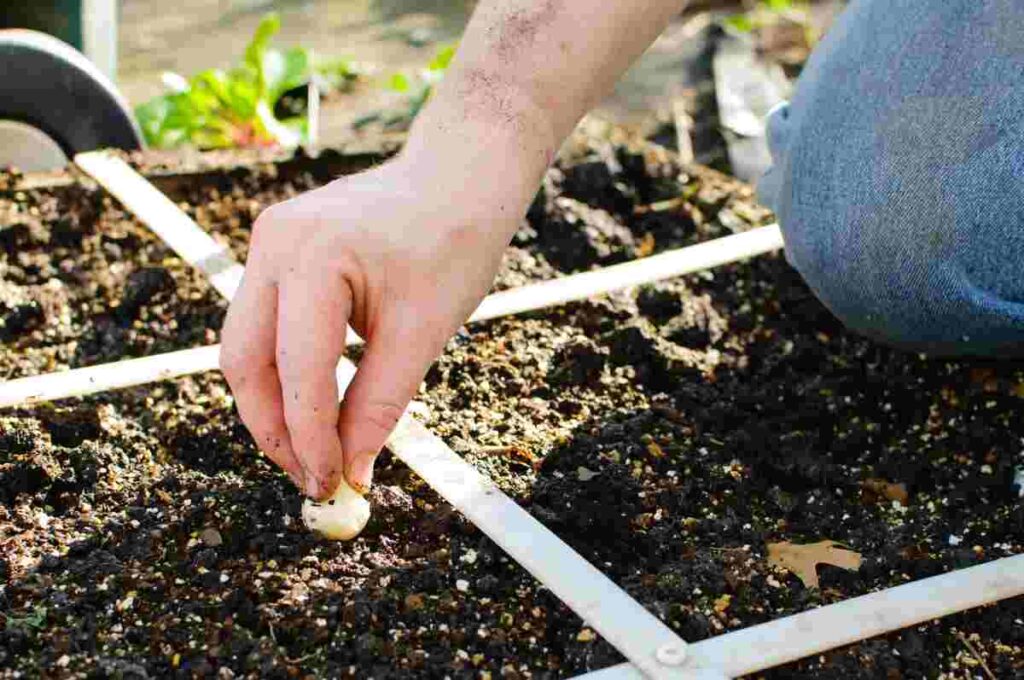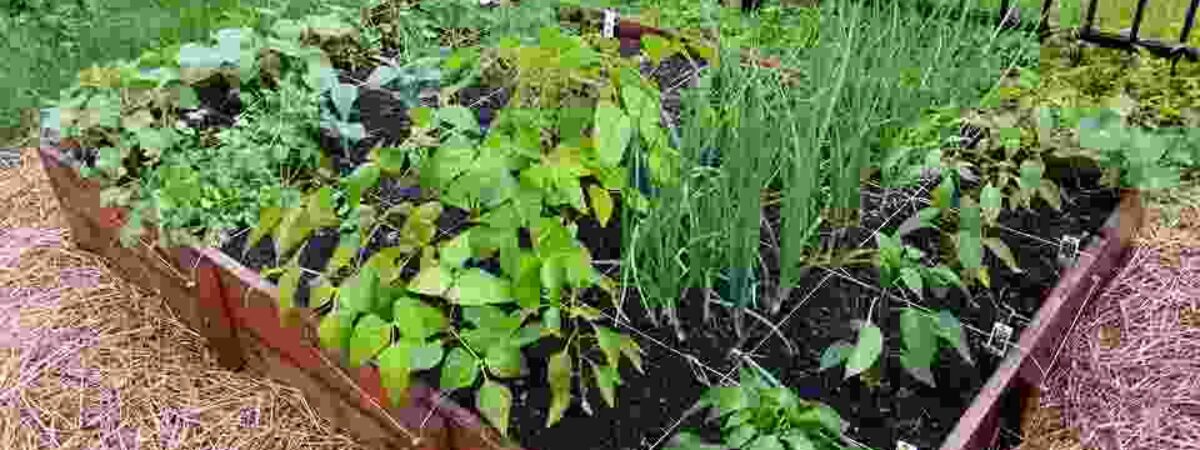If you’re interested in gardening but don’t have a lot of space, time, or energy to maintain a large garden, Square Foot Gardening could be the perfect solution for you.
Square Foot Gardening is a versatile and efficient way to grow your own vegetables, fruits, and herbs in a limited space while minimizing the amount of work and resources required. Whether you have a small backyard, balcony, or even just a sunny windowsill, you can create a beautiful and productive garden with Square Foot Gardening.
In this post, we’ll explore the basics of Square Foot Gardening, including its history, benefits, and how to get started. We’ll also discuss some of the variations and sustainability practices of Square Foot Gardening, as well as answer some of the most frequently asked questions about this popular gardening method.
So, whether you’re a seasoned gardener or a beginner, get ready to learn all about Square Foot Gardening and how it can help you grow your own food, save money, and enjoy the many benefits of gardening.
What is square-foot gardening?
Square Foot Gardening is a popular gardening method that involves creating a small garden bed divided into one-foot squares, each planted with a different crop. This method was developed by Mel Bartholomew in the 1970s as a way to maximize the use of limited gardening space while minimizing the amount of work and resources needed.
Square Foot Gardening is based on the principles of intensive planting, crop rotation, and companion planting, and allows for a diverse range of vegetables, fruits, and herbs to be grown in a small area. It is a versatile and efficient way to grow your own food, and can be done in a variety of settings, from small backyard gardens to urban balconies or even indoor spaces.
Square Foot Gardening has become increasingly popular in recent years as more people seek to grow their own food, reduce their ecological footprint, and enjoy the many benefits of gardening. With its simple and effective approach, Square Foot Gardening is a great option for anyone looking to start a garden or maximize the use of their existing gardening space.
History and evolution of Square Foot Gardening
Square Foot Gardening was first developed by Mel Bartholomew in the 1970s as a way to make gardening easier and more accessible for people with limited space and resources. Bartholomew, a retired engineer and avid gardener, was frustrated with the traditional row gardening method, which he found to be time-consuming, wasteful, and inefficient.
To solve these problems, Bartholomew developed the concept of Square Foot Gardening, which involves dividing a small garden bed into one-foot squares and planting a variety of crops in each square. By doing so, he was able to maximize the use of space, reduce the amount of work and resources needed, and achieve higher yields than with traditional row gardening.
Bartholomew wrote a book about Square Foot Gardening in 1981, which became a bestseller and helped popularize this gardening method. Since then, Square Foot Gardening has evolved and been adapted to suit different gardening styles and environments, with many variations and innovations developed by gardeners around the world.
Today, Square Foot Gardening is a popular and widely practiced gardening method, used by people of all ages and backgrounds to grow their own food, beautify their homes and communities, and enjoy the many benefits of gardening. With its simple and effective approach, Square Foot Gardening has become a symbol of the growing movement towards sustainable and self-sufficient living.
Benefits of Square Foot Gardening

Square Foot Gardening offers a range of benefits for gardeners, including:
Maximizes use of space
By dividing a garden bed into one-foot squares, Square Foot Gardening allows for efficient use of limited gardening space, making it a great option for small yards, balconies, or indoor gardens.
Saves time and effort
With its focused approach, Square Foot Gardening minimizes the amount of time and effort required to plant, maintain, and harvest a garden, making it an ideal option for busy gardeners or those with physical limitations.
Reduces water usage
Square Foot Gardening uses less water than traditional row gardening, as the small squares allow for more efficient watering and reduce water waste through runoff.
Increases yield
The intensive planting of Square Foot Gardening can lead to higher yields of crops in a small area, making it a great option for gardeners looking to grow a lot of food in a limited space.
Easy to maintain
Square Foot Gardening requires less weeding and less pest management than traditional row gardening, making it a low-maintenance option for gardeners.
Improves soil health
By using compost and other organic materials to fill the garden bed, Square Foot Gardening can help improve soil health and fertility over time.
Overall, Square Foot Gardening is a highly efficient and sustainable method of gardening that offers a range of benefits for gardeners of all levels. Whether you’re a beginner or an experienced gardener, Square Foot Gardening can help you grow your own food, save time and resources, and enjoy the many benefits of gardening.
Square Foot Gardening Variations
While the basic principles of Square Foot Gardening remain the same, there are many variations and adaptations of this gardening method that can be used to suit different gardening styles and environments.
Some popular Square Foot Gardening variations include:
Raised Bed Square Foot Gardening
This involves building a raised garden bed and dividing it into one-foot squares, making it easier to manage and more accessible for gardeners with physical limitations.
Vertical Square Foot Gardening
This involves growing plants vertically, using trellises or other supports, to maximize the use of vertical space and allow for more plants to be grown in a small area.
Container Square Foot Gardening
This involves using containers, such as pots or buckets, to grow plants in a small space, making it a great option for urban gardeners or those with limited outdoor space.
Companion Square Foot Gardening
This involves planting crops that complement each other in the same square, such as planting basil with tomatoes to repel pests and improve flavor.
Square Foot Gardening with Cover Crops
This involves planting cover crops, such as clover or buckwheat, in between crops to improve soil health and fertility.
Winter Square Foot Gardening
This involves growing crops during the winter months using cold frames or other protective covers, allowing for year-round gardening.
Overall, these variations of Square Foot Gardening offer gardeners a range of options for adapting this method to suit their individual needs and preferences. Whether you have limited space, physical limitations, or a desire to try something new, there is a Square Foot Gardening variation that can work for you.
Planning and Preparation to do square foot gardening

Planning and preparation are key to successful Square Foot Gardening. Here are some steps to follow when planning and preparing your Square Foot Garden:
Choose the right location
Select a spot that receives at least six hours of sunlight per day and has good drainage. If you are using any container to grow your plant, make sure it has drainage holes.
Determine the size of your garden
Decide how many one-foot squares you want to create based on the available space and the amount of produce you want to grow.
Build or prepare your garden bed
If you’re using a raised bed, build it to the desired size and height. If you’re planting directly in the ground, remove any grass or weeds and amend the soil with compost or other organic materials.
Divide your garden bed into one-foot squares
Use string or wooden dowels to create a grid of one-foot squares, leaving a small path between each square for easy access.
Fill each square with soil
It is suggested to use a high-quality soil mix that is rich in nutrients and has good drainage. You can also add compost or other organic materials to improve soil health.
Choose your crops
Decide which crops you want to grow and how many squares to dedicate to each crop based on their size and growing requirements.
Plant your seeds or transplants
Follow the planting instructions for each crop, and be sure to space them appropriately within each square.
Water and maintain your garden
Water your garden regularly, and use organic pest and weed control methods as needed. Be sure to also monitor your garden for any signs of disease or nutrient deficiencies.
By following these steps, you can create a healthy and productive Square Foot Garden that will provide you with fresh produce throughout the growing season.
Layout for square foot gardening
The layout of a Square Foot Garden is an essential aspect of this gardening method. Here are the steps to create a layout for your Square Foot Garden:
Divide your garden bed into one-foot squares
Using string or wooden dowels, create a grid of one-foot squares, leaving a small path between each square for easy access.
Determine which crops you want to grow
Based on the available space and the amount of produce you want to grow, decide which crops to plant and how many squares to dedicate to each crop.
Follow the Square Foot Gardening planting guide
The Square Foot Gardening planting guide recommends the number of plants to grow in each square foot, depending on the crop. For example, you can grow one tomato plant per square foot, but up to sixteen radish plants.
Plant your seeds or transplants
Follow the planting instructions for each crop, and be sure to space them appropriately within each square.
Use companion planting
Plant crops that complement each other in the same square, such as planting basil with tomatoes to repel pests and improve flavor.
Consider using trellises or other supports
If you’re growing vertical crops, such as beans or tomatoes, use trellises or other supports to maximize the use of vertical space.
Label your crops
Use plant markers or labels to identify each crop, and keep a record of what you planted in each square.
By following these steps, you can create an organized and efficient Square Foot Garden that maximizes space and yields a bountiful harvest.
Plant selection of square foot gardening

Selecting the right plants is essential for a successful Square Foot Garden. Here are some factors to consider when selecting plants for your Square Foot Garden:
Plant size
Choose plants that are appropriate for the size of your garden bed and the size of the squares in which they will be planted. For example, select dwarf or bush varieties of plants that typically grow tall, such as tomatoes or peppers.
Plant spacing
Consider the spacing requirements of each plant, and make sure to leave enough room between plants within each square. Follow the Square Foot Gardening planting guide for recommendations on plant spacing.
Plant compatibility
Consider planting crops that are compatible with each other, such as planting basil with tomatoes to repel pests and improve flavor. Avoid planting crops that are not compatible, such as planting onions with beans, which can stunt the growth of the beans.
Climate and season
Choose plants that are appropriate for your climate and the season in which you will be planting. Some crops thrive in cooler temperatures, while others prefer warmer weather.
Yield
Consider how much produce you want to harvest, and choose plants that will yield the amount you desire. For example, if you want a lot of tomatoes, plant several tomato plants in your Square Foot Garden.
Disease and pest resistance
Choose plants that are resistant to common pests and diseases in your area, or use organic pest and disease control methods to keep your plants healthy.
By carefully selecting the right plants for your Square Foot Garden, you can maximize your harvest and enjoy fresh, healthy produce all season long.
Care and Maintenance for square foot gardening
Proper care and maintenance are crucial for keeping your Square Foot Garden healthy and productive.
Here are some tips for caring for your Square Foot Garden
Watering
Make sure to water your Square Foot Garden regularly, especially during dry spells. Use a watering can or a gentle hose attachment to avoid damaging delicate plants.
Weeding
Keep your Square Foot Garden free of weeds by pulling them regularly. Use a hoe or hand tool to remove weeds while being careful not to disturb the roots of your plants.
Fertilizing
Provide your plants with the nutrients they need by fertilizing regularly. Use organic fertilizers, such as compost or worm castings, to avoid the use of harsh chemicals.
Pruning
Prune your plants as needed to promote healthy growth and productivity. Remove dead or diseased leaves, and pinch back stems to encourage branching.
Mulching
Mulch your Square Foot Garden to help retain moisture, suppress weeds, and provide nutrients to your plants. It is suggested to use organic materials, such as straw, leaves, or grass clippings, as mulch.
Pest and disease control
Keep an eye out for pests and diseases, and take action to control them before they cause significant damage. Use organic pest and disease control methods, such as companion planting or neem oil, to avoid the use of harsh chemicals.
Harvesting
Harvest your crops regularly to encourage continued growth and productivity. Use sharp scissors or pruning shears to avoid damaging your plants.
By following these care and maintenance tips, you can keep your Square Foot Garden healthy and productive, ensuring a bountiful harvest throughout the growing season.
Sustainability in Square Foot Gardening

Square Foot Gardening is a sustainable and eco-friendly way to grow fresh produce at home.
Here are some ways that Square Foot Gardening promotes sustainability:
Water conservation
By using raised beds and carefully spaced plants, Square Foot Gardening requires less water than traditional gardening methods. Additionally, using mulch helps to retain moisture in the soil, reducing the need for frequent watering.
Soil health
Square Foot Gardening relies on nutrient-rich soil to support plant growth. By using compost and other organic matter to improve soil health, Square Foot Gardeners can reduce the need for synthetic fertilizers and promote the growth of healthy, productive plants.
Organic pest and disease control
Square Foot Gardeners can use organic pest and disease control methods, such as companion planting and natural predators, to protect their plants without the use of harsh chemicals. This promotes a healthy ecosystem and reduces the amount of synthetic pesticides and herbicides in the environment.
Local food production
By growing your own food at home, you can reduce your carbon footprint by avoiding the transportation and packaging costs associated with store-bought produce. Additionally, Square Foot Gardening allows you to grow a variety of fresh, healthy produce right in your own backyard.
Biodiversity
Square Foot Gardening encourages the planting of a variety of crops, which promotes biodiversity and supports a healthy ecosystem. This can help to reduce the need for synthetic fertilizers and pesticides, as well as support the growth of beneficial insects and wildlife.
By practicing Square Foot Gardening, you can promote sustainability and reduce your impact on the environment while enjoying fresh, healthy produce at home.
Conclusion
Square Foot Gardening is a practical and sustainable way to grow fresh produce at home, regardless of your level of gardening experience or the size of your outdoor space. With careful planning, proper preparation, and attentive care, you can create a productive and beautiful garden that provides you with fresh, healthy produce throughout the growing season.
By following the guidelines and tips outlined in this Ultimate Guide to Square Foot Gardening, you can get started on your own Square Foot Garden and enjoy the many benefits it has to offer. Whether you’re looking to save money on groceries, reduce your environmental impact, or simply enjoy the satisfaction of growing your own food, Square Foot Gardening is an excellent choice.
So, grab your gardening tools, select your favorite seeds, and get started on your own Square Foot Garden today. With a little time and effort, you can create a beautiful and productive garden that provides you and your family with fresh, healthy produce all season long.
You may also like to read
How to Propagate Indoor Plants: Simple Techniques for Beginners
Everything You Need to Know About Peat Moss: Composition, Benefits, and Risks







